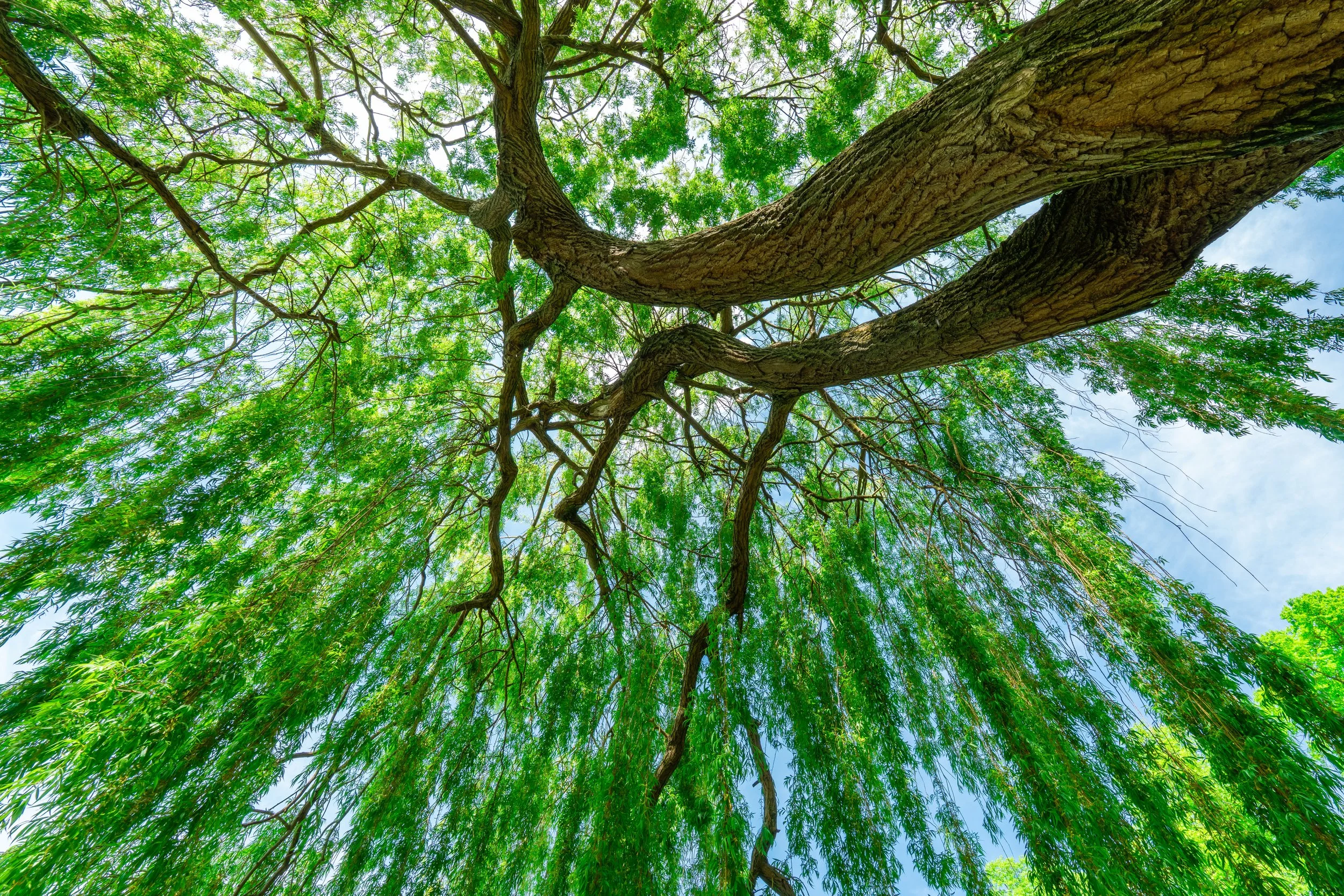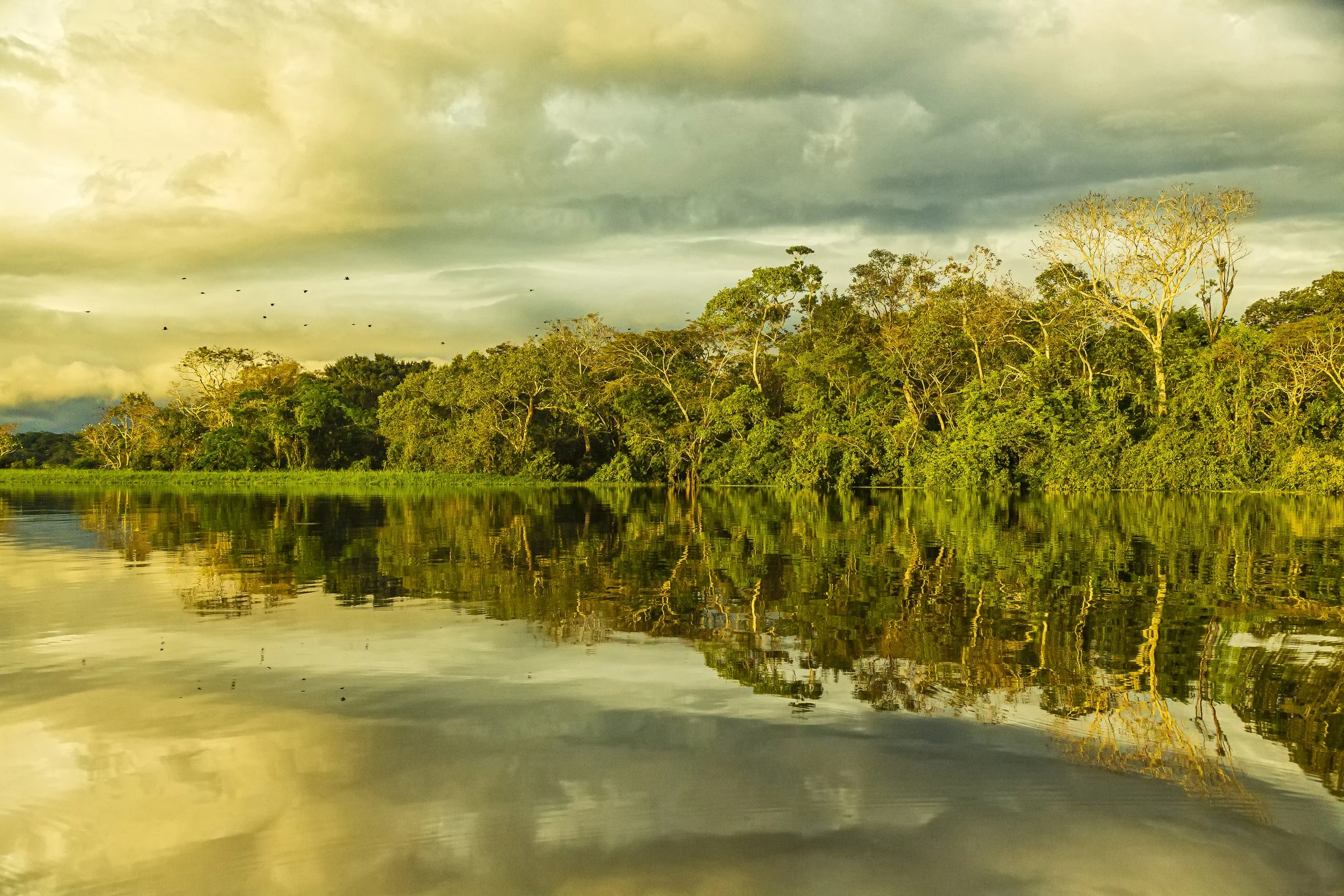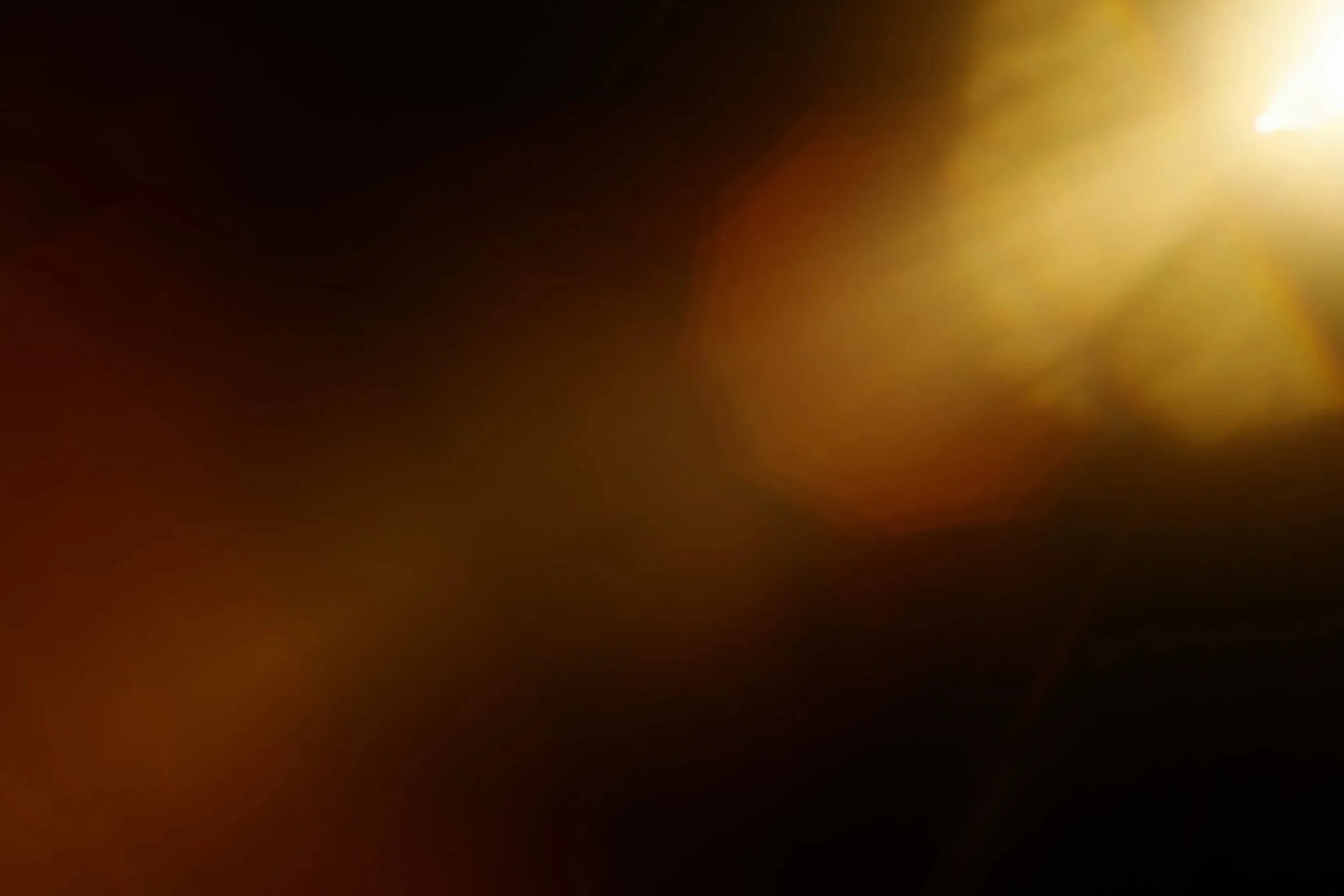Roots in Plants & Spirit.
I grew up with my face turned toward the trees. Even as a child, I spent hours climbing, confiding, and listening — the willow was my first sanctuary. Plants were not merely background; they were companions and keepers of a quiet intelligence I could feel long before I had words for it.
My early family life was both loving and fractured — well-intentioned parents, a tangle of affection and absence, encouragement and harm. Those early wounds and the outer freedoms of my childhood — hours outside alone — gave me independence and survival skills, but also left me searching for belonging.
The plants became my constant companions and pointed me again and again toward the spirits who live in them. When I was introduced to Indigenous and spiritual circles as a young girl, I recognized something that had always been stirring in me.
I began sitting in plant medicine ceremonies before the age of ten, long before most people would imagine such things possible. I quite literally found myself in those early circles of sacrament, song, and deep listening. They showed me that what I had always felt inside — the stirrings, the guides, the knowing — were not accidents. They helped me name the unseen, normalize the gifts I thought made me strange, and gave me a place where I finally felt at home.
“The willow was my first sanctuary.”
The Breaking Point.
Years later, I set those roots aside to pursue the more “ordinary” joys of marriage, family, and career; the fun and fullness of “normal life.” For a time, I was satisfied.
But eventually my spirit began to wither. Stress, disconnection, and a narrow focus on achievement brought me to the brink.
“My life cracked open in ways I could not ignore.”
A sudden cascade of massive strokes left me unable to speak, walk, or reliably know my own life.
As if that were not enough, my body then broke further — while traveling through the jungles of Central and South America in search of healing for my brain and spirit, I acquired a severe case of leishmaniasis, a parasitic infection that attacked my skin, organs, and blood.
Doctors told me I had two months to live. The only treatment available was a heavy-metal drug with slim odds of success and a long list of potential devastations.
Weak, frightened, and still damaged from the strokes, I felt utterly stuck. Walking across the room was a herculean effort. I remember screaming from within my own rock bottom — into the void — and then sitting, exhausted, surrendering into deep meditation.
“Doctors told me I had two months to live.”
Ayahuasca Calls Me Back.
Suddenly, a remembrance flowed in to fill the empty space: Ayahuasca can heal brain damage. It felt as if the message came from that old friend herself, and I found myself speaking aloud: “Mama Ayahuasca, if this is really you calling me back, you’re going to have to show up at the door, because that’s about as far as I can walk right now.”
Three hours later, there was a knock. At the door stood a woman I had just met the day before. She said: “I know this is strange, but there’s a shaman in town serving something called… Akawasi? And I’d like to try it, but I’m scared. Would you come with me?”
In that instant I knew: the medicine had answered.
That first night back in ceremony, I saw only my brain in vision — one hemisphere alive with light, the other black and empty. As the night went on, small sparks appeared in the darkness, then lines, until the two sides matched.
“When I woke the next morning, every symptom of brain damage was gone.”
Restoration Through the Medicine.
The relief lasted only three days before the deficits returned. The shaman told me to keep coming back, to sit in ceremony as often as I could. Each subsequent ceremony replayed the vision — darkness turning to light — and each time, the healing held longer. After five ceremonies, the restoration was permanent.
I was indescribably grateful, but I still carried the parasite. With my newly restored cognition, I was able to connect with a leading physician and researcher of this disease. To his astonishment, my bloodwork no longer showed active infection.
“This doesn’t just happen,” he told me. “What have you been doing?”
When I answered simply, “Lots of Ayahuasca,” he smiled and confided that he was already studying the medicine in jungle communities, where it had long been used to treat this very disease. I was, it seemed, living proof.
“Each ceremony replayed the vision— darkness turning to light.”
A Life in Service.
My literal escape from both cognitive imprisonment and a death sentence filled me with indescribable gratitude. That gratitude turned into a vow: to give my life in service to the medicine.
I did not know what that would look like — only that it was the only response that made sense.
What followed was a time of fierce love and tough guidance from teachers and friends, shamans, maestras, and allies. They taught me to receive help, to stop defending, to listen with humility, and to keep returning to the work even when it cracked me open. They held my hair as I purged, passed me another cup, and showed me what true devotion looks like in practice.
Ayahuasca gave me back my life, but she did not do it alone. She came with human hands, strong voices, and loving hearts that steadied me on the path and to whom I am eternally grateful.




